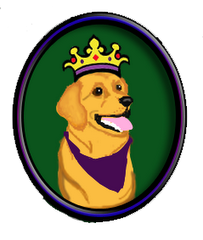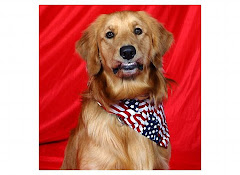Read more!
How to Give Medications to Dogs
Don’t give your
dog any medication until you have spoken to your
veterinarian to make sure it is the right medicine for the dog and the
circumstances. You should also ask for instructions on how to give the drug and
the correct dosage for your dog.
Pills, Capsules and Tablets
To give a dog a pill, slip your thumb into the space behind one of the
canine
teeth and press upward on the roof of the mouth. As the
mouth begins to open, press down on the lower jaw with the opposite thumb.
Alternatively, press in on both lips from above the muzzle. As the
skin pushes in behind the
canines, the dog will open her mouth.
Insert the pill well to the back of the tongue in the middle of the mouth.
If you place the pill too far forward or to the side of the tongue, the dog
will spit it out. Close the dog’s mouth and massage or rub her throat until she
swallows. If the dog licks her nose, the pill has been swallowed. Blowing
briefly into the dog’s nose may also cause her to quickly swallow the pill. You
can also give her a syringe full of water to make sure she swallows, or give
the dog a small treat after the pill goes down.
Do not break the pill up into a powder. Powders have an unpleasant taste
that dogs don’t accept well. Some pills also have a protective coating that is
important for the delayed release of the medication, and crushing the pill will
destroy the coating.
Some pills can be given in food. This can be done by making up small
“meatballs” of
dog food. Give the dog one or
two undoctored meatballs, then one with the pill pushed deep into the center.
Follow up with an undoctored one so the dog will continue to take the
treats even if she gets a small
taste of the medicine.
There are also commercial treats available made specfically for
administering medication that are sticky enough to make it difficult for the
dog to extract a pill while eating the treat. They are soft so they mold easily
around the pill. Pill Pockets and Flavor Doh are two examples.
Always check with your veterinarian before giving any pills with food.
Liquids
Liquid medicines, including electrolytes and water solutions, are
administered into the cheek pouch between the molars and the cheek. A medicine
bottle, eyedropper, or plastic syringe without the needle can be used to
dispense the liquid.
Pinch the dog’s lips together. Insert the end of the dispenser into the
cheek pouch and seal the lips with your fingers. Tilt the dog’s chin upward and
slowly dispense the liquid. The dog will swallow automatically. If you must
give the dog a large quantity of liquid, you will need to pause periodically
and give her time to swallow. Do not try to push a full syringe of liquid
quickly down the dog’s throat!
Injections
Injecting any foreign substance into the body always carries with it the
danger of causing an acute allergic or anaphylactic reaction. Treating
anaphylactic shock requires
immediate intravenous adrenaline and oxygen. This is one reason why it is best
to have your veterinarian give injections. As a precaution, do not administer a
drug by injection to a dog who has had any sort of past history of an allergic
reaction (such as hives) to that drug.
If it becomes necessary to give injections at home (for example, if the dog
is diabetic), have your veterinarian demonstrate the procedure. Some injections
are given under the skin (subcutaneous) and others into the muscle
(intramuscular). Directions that come with the product will indicate the
correct route of injection.
The injection itself usually is not painful, although intramuscular
injections may hurt somewhat as the medicine is injected. Dogs should be
restrained. Having an assistant is helpful.
Begin by drawing the medicine up into the syringe. If there is an air bubble
inside, flick the syringe to get the bubble to the top. Then point the needle
toward the ceiling or into a sink and press the plunger to expel all air from
the syringe and needle. Make sure the correct amount is still in the syringe
after the air bubble is expelled. Select the injection site, part the hair, and
cleanse the dog’s skin with cotton soaked in alcohol.
Read More......
![]()
![]()
![]()


